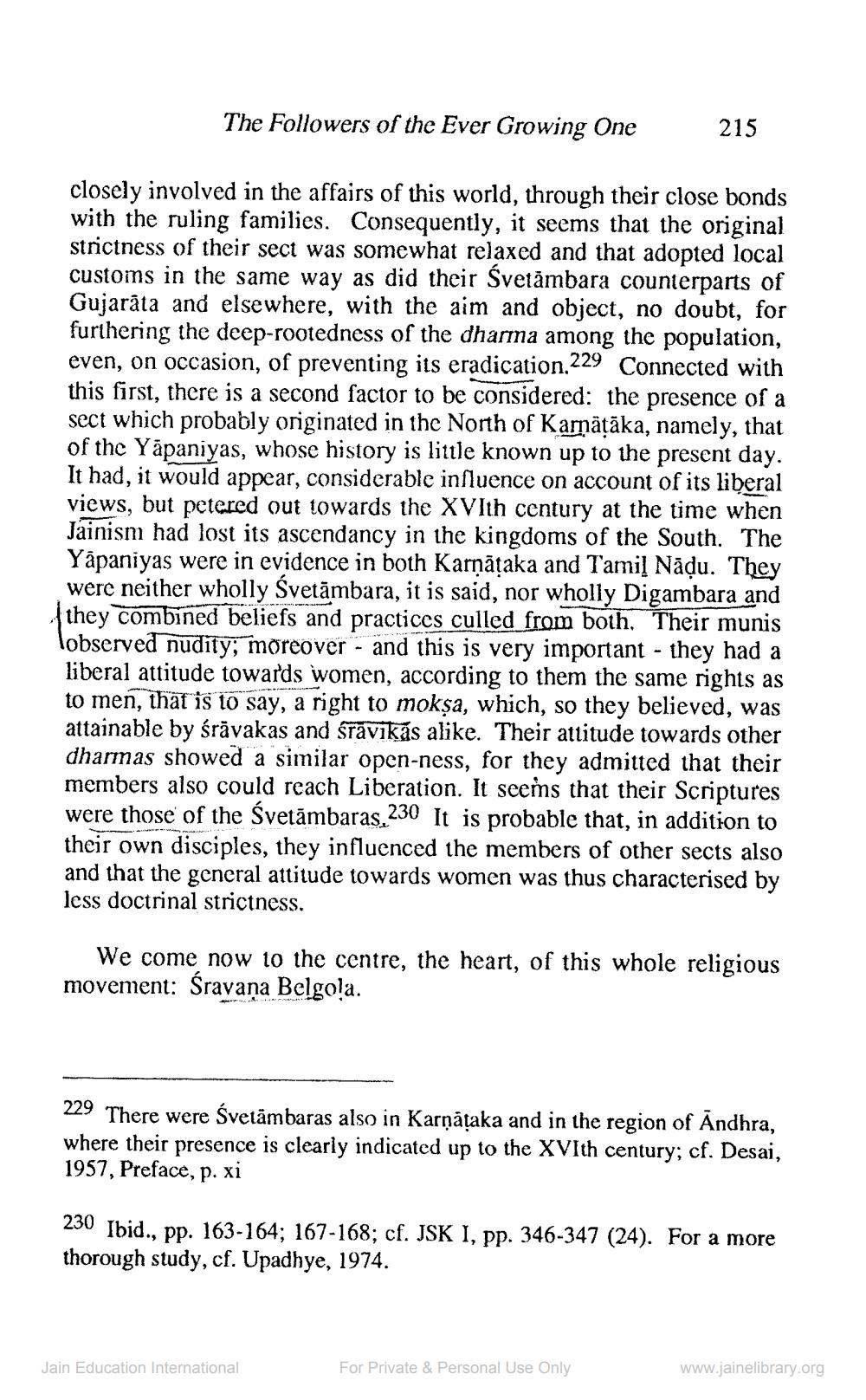________________
The Followers of the Ever Growing One
215
closely involved in the affairs of this world, through their close bonds with the ruling families. Consequently, it seems that the original strictness of their sect was somewhat relaxed and that adopted local customs in the same way as did their Svetămbara counterparts of Gujarāta and elsewhere, with the aim and object, no doubt, for furthering the deep-rootedness of the dharma among the population, even, on occasion, of preventing its eradication.229 Connected with this first, there is a second factor to be considered: the presence of a sect which probably originated in the North of Karnätāka, namely, that of the Yāpaniyas, whose history is little known up to the present day, It had, it would appear, considerable influence on account of its liberal views, but petered out towards the XVIth century at the time when Jainism had lost its ascendancy in the kingdoms of the South. The Yapaniyas were in evidence in both Karņāțaka and Tamil Nāļu. They were neither wholly Svetāmbara, it is said, nor wholly Digambara and they combined beliefs and practices culled from both. Their munis lobserved nudity; moreover - and this is very important - they had a liberal attitude towards women, according to them the same rights as to men, that is to say, a right to mokșa, which, so they believed, was attainable by śrāvakas and stāvikás alike. Their attitude towards other dharmas showed a similar open-ness, for they admitted that their members also could reach Liberation. It seems that their Scriptures were those of the Svetāmbaras,230 It is probable that, in addition to their own disciples, they influenced the members of other sects also and that the general attitude towards women was thus characterised by less doctrinal strictness.
We come now to the centre, the heart, of this whole religious movement: Śravana Belgo!a.
229 There were Śvetāmbaras also in Karnataka and in the region of Andhra, where their presence is clearly indicated up to the XVIth century; cf. Desai, 1957, Preface, p. xi
230 Ibid., pp. 163-164; 167-168; cf. JSK I, pp. 346-347 (24). For a more thorough study, cf. Upadhye, 1974.
Jain Education International
For Private & Personal Use Only
www.jainelibrary.org




